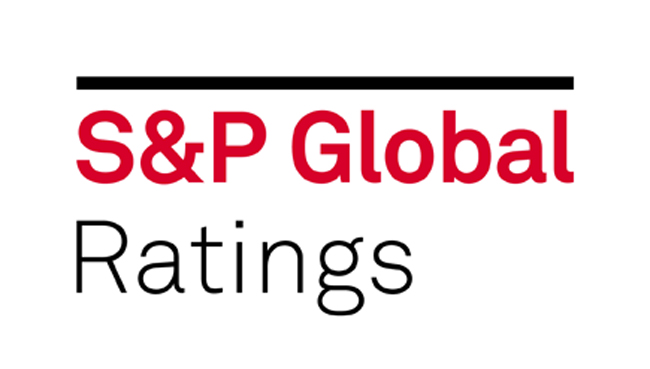
S&P reflects on the pandemic period
At the KangaNews New Zealand Debt Capital Market Summit in December 2021, Kate Thomson, managing director and analytical manager, structured finance ratings at S&P Global Ratings in Melbourne, provided an outlook on the impact of and exit from the COVID-19 pandemic on housing and consumer asset quality.
Compared with discussions about possible economic impacts that took place in the early days – especially before governments stepped in with material support packages – housing and consumer assets have, for the most part, performed very well across the globe during the pandemic to date.
While my focus is on structured-finance ratings globally, some trends can be applied across financial markets and segments. Considering the scale of the event that is transpiring, our conclusion is that overall ratings have performed across all asset classes.
The commercial side of the lending market has taken the brunt of COVID-19 – the negative rating bias in most markets comes from well outside the household and consumer segments.
In the Americas, it is mostly collateralised loan obligations (CLOs) with exposure to the corporate sector as well as commercial mortgage-backed securities (CMBS) that have experienced rating downgrades. The same is true for structured-finance ratings in Europe, where commercial exposures have been much more associated with downgrades through this period.
Compared with previous episodes of economic stress, rating performance has been relatively benign through the pandemic period. The direction of rating movements in structured finance is negative globally but it has also been relatively limited, at 0.1 notches. Prior to the pandemic, the most recent such period delivered 4-5 notches.
Transactions with exposure to the more troubled corporate sector have seen the most notable and consistent degree of underlying collateral damage, although CLO managers have generally retained the ability actively to trade assets. In many cases this has mitigated at least some of the rating impacts.
"Compared with previous episodes of economic stress, rating performance has been relatively benign through the pandemic period. The direction of rating movements in structured finance globally is negative but it has also been relatively limited, at 0.1 notches."
DELINQUENCY DECLINE
Behind CMBS ratings, pressure in lodging and retail has caused delinquencies to tick up. For consumer and housing asset classes, reported delinquencies have likely been distorted by forbearance programmes and arrears are now declining. Reported arrears at the height of lockdown-related disruption varied widely by country, reflecting underlying market fundamentals and depending on reporting standards for borrowers benefiting from payment moratoria.
Arrears levels are now generally declining across the globe, although job support schemes may be masking underlying credit pressures in some segments and in some jurisdictions.
US and European auto and credit card performance is now back largely to pre-pandemic levels, and arrears are lower than the pre-pandemic period in Australia and New Zealand.
There is a link between lockdowns and arrears. As an example, UK credit card delinquencies ticked up during the most recent UK lockdown, but to a lesser extent than the 2020 impact as people have adjusted to living with COVID-19 and managing their businesses through shutdowns.
Elsewhere, we are starting to see a need for rated entities to address the impact of environmental, social and governance-type risks on asset quality. Cyber crime affected some transactions in Europe when a ransomware attack disrupted servicing. On the governance side, LIBOR transition may also have some impact on ratings.
Residential mortgage-backed securities (RMBS) delinquencies are low and ratings have continued to perform very well. Surprisingly, there is considerable stability in how the arrears and losses for this segment of the lending market has performed in 2020 and 2021. There are some blips, including when COVID-19 first emerged, but the longer-term trend is relatively smooth.
For the most part, upgrades have been the theme in RMBS – in the Asia-Pacific region in particular. However, there have been some minor downgrades for very specific reasons not generally attributable to the pandemic.
Credit support is increasing as people more quickly repay their home loans. There have been very low arrears and losses, all of which are very supportive of ratings.
We see differences in forbearance measures across markets, particularly in the residential space. Some markets may have distortions in how hardship is reported and how arrears trends are rolling off. As an example, US RMBS delinquencies are higher than pre-pandemic levels but are reducing toward 2018 levels.
In summary, the household sector has been very well protected around the globe, and certainly in Australia and New Zealand.
“Higher mortgage rates, continued strong homebuilding, tighter lending rules and changes in some tax settings should help address some of the demand and supply imbalances in the sector over the medium term.”
SYSTEM PERFORMANCE
New Zealand system performance is similar to the global story even though there has been a somewhat different COVID-19 experience locally. New Zealand’s quick initial pandemic containment meant the economic recovery was quicker than some peers.
For bank asset quality, nonperforming loans in the housing and consumer sectors increased in 2020 as the pandemic hit and lockdowns were imposed. But these recovered quickly in the second half of 2020 and into 2021, as closed borders and lockdowns meant very limited COVID-19 and enabled economic activity to resume.
Government support during lockdowns and the strength of the economic recovery since has meant arrears and losses have been significantly lower than initially feared.
In New Zealand, the proportion of lenders seeking payment deferral in the initial stage of the pandemic peaked in the second quarter of 2020. This is consistent with many parts of the globe. Levels have not returned to these heights despite the return of lockdowns in 2021 – something that is true of New Zealand, Australia and the UK.
If we use the structured-finance sector as a proxy for the quality of the residential sector, we see that credit quality is strong. A weighted average loan-to-value ratio of 63 per cent, moderate loan sizes and low interest rates have kept arrears low.
Consumer assets were also subject to an increase in arrears in 2020. They have since demonstrated an improvement largely to pre-COVID-19 levels, although there has been some uptick in 2021 in line with lockdowns.
The system stats do not include the buy-now, pay later sector, as it is currently a very small part of the credit market. These lenders’ performance varies, but for the most part follows similar patterns albeit at a higher level.
RATINGS OUTLOOK
Our view is that the outlook for arrears is robust. S&P’s economists have a GDP growth forecast of about 2.9 per cent for New Zealand in 2022. This helps underpin unemployment forecasts of an expected 3.3 per cent, which is well down from the 4.6 per cent recorded in 2020.
While the first quarter of 2022 could see a modest hit to New Zealand’s economic activity due to increasing COVID-19 case numbers, we expect only mild economic effects due to limited declines in the movement of people.
Rapid acceleration of vaccination in New Zealand will be key to maintaining economic activity and income for borrowers. Economic activity is clearly influential for unemployment, and is a key factor and driver of arrears. Meanwhile, interest rates remain low on a historical basis despite recent increases. All these factors are supportive of the mostly favourable arrears trend and losses.
There are risks, in the form of house prices and further interest rate moves. House price growth in New Zealand has been a global standout, prompting several macroprudential interventions to moderate it. This raises risks of a sharper fall in house prices.
Our base case view, however, is that higher mortgage rates, continued strong homebuilding, tighter lending rules and changes in some tax settings should help address some of the demand and supply imbalances in the sector over the medium term. The same factors should also support a slowdown in property price growth.
We head into 2022 with nonperforming loans at a low level system-wide, and we expect residential and consumer assets to continue to perform well. The proportion of loans benefiting from COVID-19 hardship is low, having significantly reduced during the onset of the crisis. This implies that there is unlikely to be a wholesale lift in arrears from this factor alone.
The emergence of the Omicron variant has been a stark reminder that the pandemic is not yet over. However, we have learned that society is remarkably adaptable. People have a much better understanding of how employment might be affected in subsequent lockdowns and whether they will need hardship loan deferrals. Many people ended up not needing some of these concessions, and these lessons will moderate the impact of any future restrictions.
Unemployment is a key driver of people repaying their loans and, in a full-recourse market such as New Zealand, this is an important factor in losses across the system.

nonbank Yearbook 2023
KangaNews's eighth annual guide to the business and funding trends in Australia's nonbank financial-institution sector.











